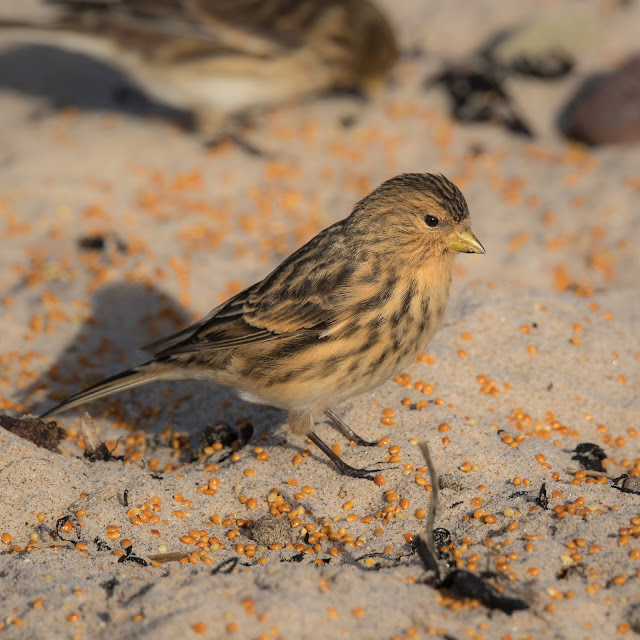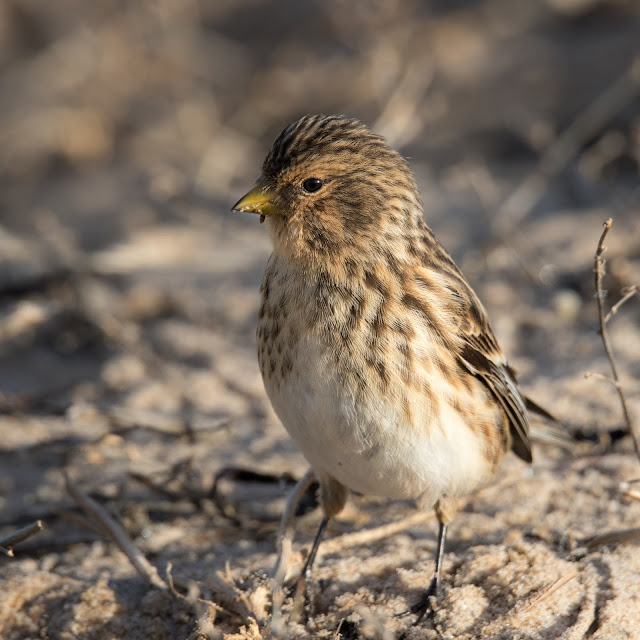It has been several weeks since I went up to see the squirrels. This time I was there in the afternoon and only this guy showed up. Since I was last there he has changed into his dark winter coat and grown some impressive ear tufts. He is very partial to pecan nuts but I expect any nuts would do.
My Blog List
Thursday 30 November 2017
Tuesday 28 November 2017
Fire Rescue Service
I had a most unexpected visitor yesterday evening. I heard a strange noise coming from the sitting room and when I went to investigate it was coming from the wood-burning stove, which fortunately wasn't lit. And this is what I saw.
The tree sparrow must have fallen down the chimney and ended up in the stove. It was flapping around in the ashes but I managed to catch it as I didn't want an ash-covered sparrow flying around the house.
Of course it had then to have its photo taken.
It was cold and dark outside and I wasn't sure how long the sparrow had been in the stove. It looked pretty groggy to start with and I wondered if it was starved and/or dehydrated. In the daytime I would just have released but I put it in a transparent box with food and water. I left it in peace but I can't tell whether it took any food or water. I reasoned that it would be safer in the box overnight and it seemed none the worse for its adventure as I released it this morning. Perhaps we should call it Passer cineraria, the ashy sparrow.
The tree sparrow must have fallen down the chimney and ended up in the stove. It was flapping around in the ashes but I managed to catch it as I didn't want an ash-covered sparrow flying around the house.
Of course it had then to have its photo taken.
It was cold and dark outside and I wasn't sure how long the sparrow had been in the stove. It looked pretty groggy to start with and I wondered if it was starved and/or dehydrated. In the daytime I would just have released but I put it in a transparent box with food and water. I left it in peace but I can't tell whether it took any food or water. I reasoned that it would be safer in the box overnight and it seemed none the worse for its adventure as I released it this morning. Perhaps we should call it Passer cineraria, the ashy sparrow.
Saturday 25 November 2017
Bird of the week - Twite
The flock of twites has returned to Druridge Bay this winter and numbers about 100 birds. They are enchanting to watch as they gradually hop closer and closer to feed before suddenly twinkling off across the beach or over the dunes. At times they were closer to me than the minimum focus on my lens (2.5m), allowing some intimate portraits. The details of their colouring are quite variable.
The BTO and Wikipedia give the twite's binomial name as Linaria flavirostris whereas the RSPB and Collins guide give it as Carduelis flavirostris. It has a greyish bill in summer and a yellow bill in winter (hence flavirostris).
Twites are rare and endangered birds and are on the red list. Most of the UK population is in north-west Scotland but in England a few breed in the south Pennines. The rest of the European breeding population is almost all in Norway.
The BirdTrack reporting rate has been low this year with a recent increase as birds have moved to the coast for the winter.
In Thomas Bewick's A History of British Birds (1797) the twite was the mountain linnet. He also had a mountain finch (our brambling) and a mountain sparrow (tree sparrow).
This is Archibald Thorburn's painting of twites.
In an attempt to reverse the population decline the RSPB is putting a lot of time, money and effort into the England Twite Recovery Project. You can read more about it and watch a video on twite ID here. You can listen to the BBC Radio 4 Tweet of the Day on the twite here.
Thursday 23 November 2017
Here's looking at you, kid
I have had the good fortune to watch a family of otters twice in the past couple of weeks. On both occasions I was the only person there and I kept as quiet and still as possible. The main clue to my presence would have been the clicking of the camera shutter yet the otters obviously knew where I was. As they swam around the pool they seemed to be looking towards me for much of the time and to be keeping an eye on me.
This pup was only 10m away and when he had finished his fish he gave me a look before getting back into the water. Just a pity that the camera lost the focus.
Tuesday 21 November 2017
More murmuration magic
The shapes made by the starlings are infinitely varied and are perhaps a bit like ink blots in a Rorschach test. What do they suggest to you?
Subscribe to:
Posts (Atom)



















































